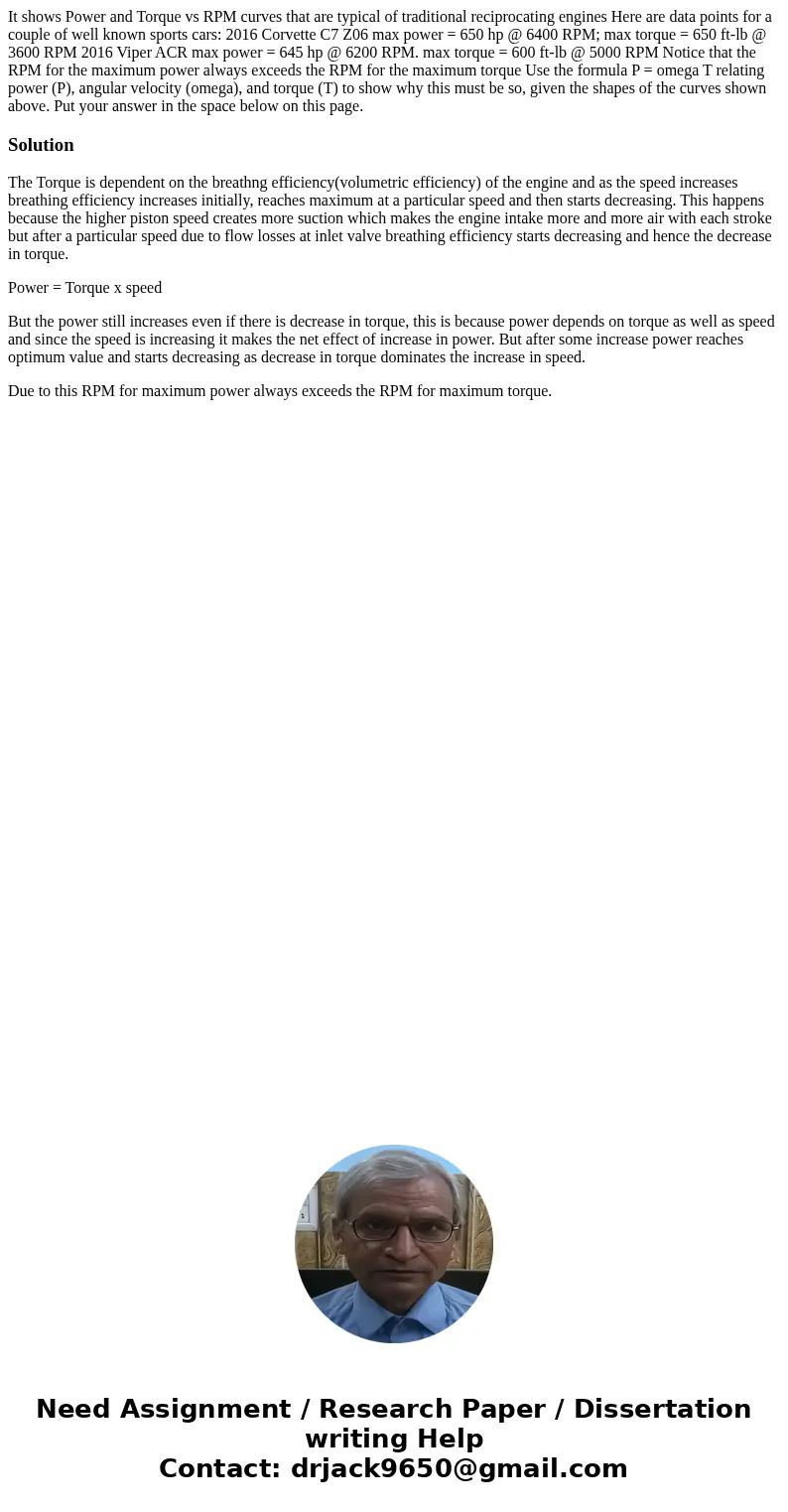It shows Power and Torque vs RPM curves that are typical of
Solution
The Torque is dependent on the breathng efficiency(volumetric efficiency) of the engine and as the speed increases breathing efficiency increases initially, reaches maximum at a particular speed and then starts decreasing. This happens because the higher piston speed creates more suction which makes the engine intake more and more air with each stroke but after a particular speed due to flow losses at inlet valve breathing efficiency starts decreasing and hence the decrease in torque.
Power = Torque x speed
But the power still increases even if there is decrease in torque, this is because power depends on torque as well as speed and since the speed is increasing it makes the net effect of increase in power. But after some increase power reaches optimum value and starts decreasing as decrease in torque dominates the increase in speed.
Due to this RPM for maximum power always exceeds the RPM for maximum torque.

 Homework Sourse
Homework Sourse